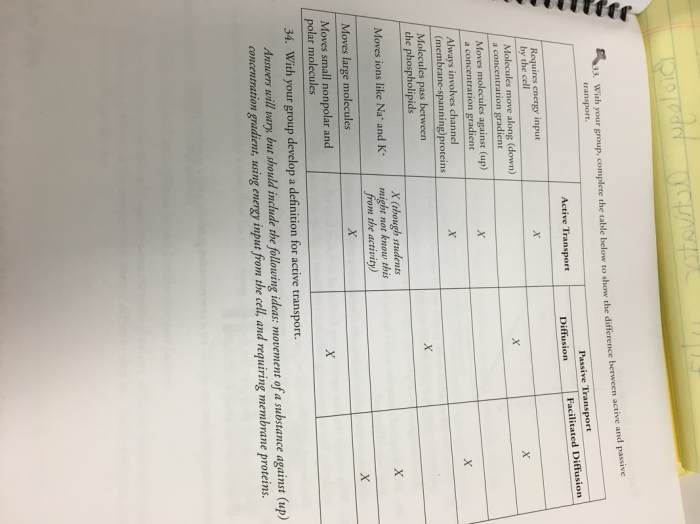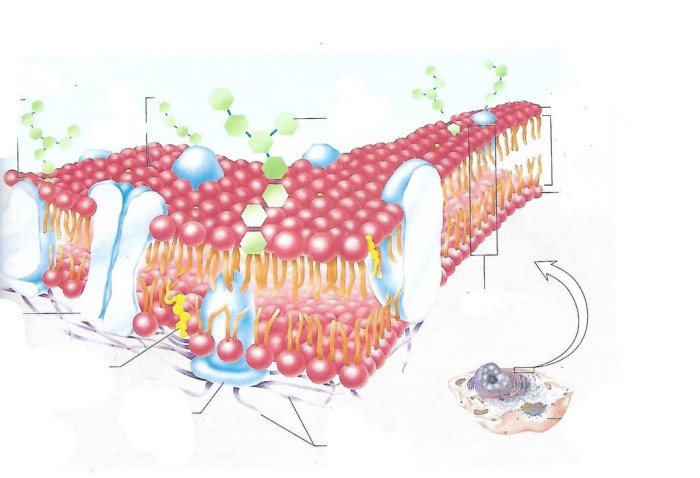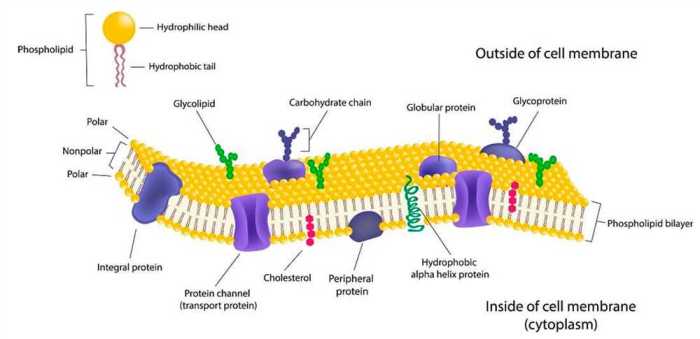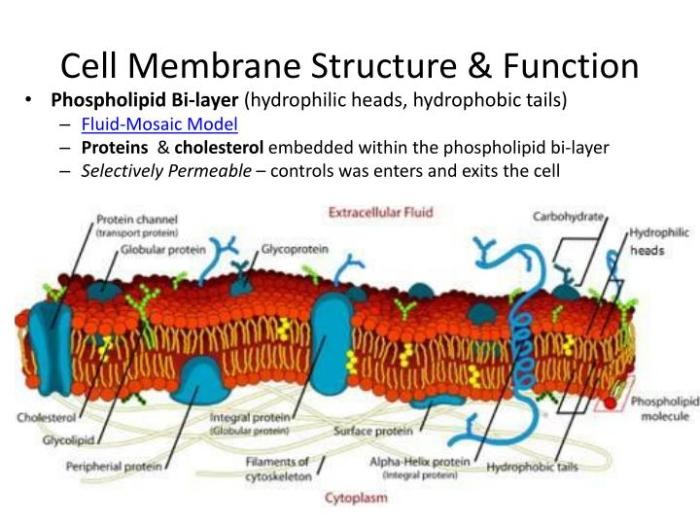Embarking on an exploration of membrane structure and function pogil answers, we delve into the intricacies of cell membranes, their composition, and their pivotal role in cellular processes. This comprehensive guide unravels the fundamental principles governing membrane transport, fluidity, and potential, empowering a deeper understanding of cellular biology.
Unveiling the structure of cell membranes, we discover a lipid bilayer adorned with proteins and carbohydrates, each component contributing to the membrane’s unique properties and functions. Membrane transport mechanisms, both passive and active, facilitate the movement of molecules across the membrane, shaping cellular homeostasis and signaling.
Cell Membrane Structure

The cell membrane, also known as the plasma membrane, is a thin layer that surrounds the cell and separates its contents from the external environment. It is a dynamic and complex structure that plays a vital role in many cellular processes, including transport, signaling, and adhesion.
Lipid Bilayer
The cell membrane is primarily composed of a lipid bilayer. Lipids are molecules that are insoluble in water but soluble in organic solvents. The lipid bilayer is formed by two layers of lipid molecules, with their hydrophobic tails facing inward and their hydrophilic heads facing outward.
This arrangement creates a barrier that is impermeable to most water-soluble molecules.
Proteins
Proteins are the second major component of the cell membrane. Membrane proteins are embedded in the lipid bilayer and can span the entire membrane or just one side. They perform a variety of functions, including transport, signaling, and adhesion. Some membrane proteins are also enzymes that catalyze reactions that occur at the cell surface.
Carbohydrates
Carbohydrates are the third major component of the cell membrane. They are attached to the outer surface of the membrane and form a glycocalyx. The glycocalyx helps to protect the cell from mechanical damage and infection. It also plays a role in cell-cell recognition and adhesion.
Membrane Transport: Membrane Structure And Function Pogil Answers

The cell membrane is selectively permeable, meaning that it allows some substances to pass through it while blocking others. The transport of molecules across the membrane can occur by either passive or active transport.
Passive Transport
Passive transport is the movement of molecules across the membrane from an area of high concentration to an area of low concentration. This type of transport does not require energy. Examples of passive transport include diffusion, osmosis, and facilitated diffusion.
Active Transport
Active transport is the movement of molecules across the membrane against their concentration gradient. This type of transport requires energy. Examples of active transport include the sodium-potassium pump and the calcium pump.
Factors Affecting Membrane Transport
The rate of membrane transport is affected by several factors, including the concentration gradient, the temperature, the surface area of the membrane, and the thickness of the membrane.
Membrane Fluidity

The cell membrane is a fluid structure that can change its shape and composition in response to changes in its environment. This fluidity is essential for many cellular processes, including transport, signaling, and adhesion.
Importance of Membrane Fluidity
Membrane fluidity allows cells to adapt to changes in their environment. For example, cells can increase their membrane fluidity in response to a decrease in temperature. This helps to prevent the membrane from becoming too rigid and brittle.
Factors Affecting Membrane Fluidity
The fluidity of the cell membrane is affected by several factors, including the temperature, the composition of the lipid bilayer, and the presence of cholesterol.
Regulation of Membrane Fluidity
Cells can regulate their membrane fluidity by changing the composition of the lipid bilayer. For example, cells can increase the proportion of unsaturated fatty acids in the lipid bilayer to increase membrane fluidity. Cells can also regulate membrane fluidity by adding or removing cholesterol from the lipid bilayer.
Membrane Potential

The cell membrane has a membrane potential, which is a difference in electrical charge across the membrane. The membrane potential is created by the uneven distribution of ions across the membrane. Ions are atoms or molecules that have lost or gained electrons, giving them a net electrical charge.
Factors Affecting Membrane Potential
The membrane potential is affected by several factors, including the concentration gradient of ions across the membrane, the permeability of the membrane to ions, and the activity of ion pumps.
Role of Membrane Potential in Cell Signaling, Membrane structure and function pogil answers
The membrane potential plays an important role in cell signaling. Changes in the membrane potential can trigger a variety of cellular responses, including the release of neurotransmitters, the contraction of muscles, and the secretion of hormones.
FAQ Section
What is the significance of membrane fluidity?
Membrane fluidity is crucial for various cellular processes, including membrane transport, signal transduction, and cell division. It allows the membrane to adapt to changing environmental conditions and maintain its functionality.
How does membrane potential contribute to cell signaling?
Membrane potential serves as a driving force for the movement of ions across the membrane. This movement triggers electrical signals that are essential for cell-to-cell communication, nerve impulse propagation, and muscle contraction.